Wine Cellar cooling units are available in a variety of configurations. It is important to consider the location and size of your wine cellar when choosing the best cooling unit for your space. Like home air conditioners, cooling units cool the air in the room and remove (exhaust) the hot air. Insulation and vapor barriers are also important considerations when purchasing your cooling unit.
Let’s build your dream wine cellar together!
Free Consultation
Design & Build Experts
Space Planning Assistance
Expert Wine Cellar Design & Cooling
With nearly 5 decades working throughout San Francisco Bay Area, Napa, Sonoma, Sacramento and greater Northern California, we at Wine Appreciation pride ourselves as custom wine storage design specialists. We are experts in commercial and residential custom wine cellar design and cooling. Whether you, or your customers, need to store 12 bottles or 100,000+ bottles, Wine Appreciation has the custom wine cellar design and cooling expertise you can trust.
Customizing a space for a wine cellar or wine storage can be tricky. Rest assured, with our selection in traditional wood or contemporary metal and acrylic racking systems, you have many options tailored to fit your wine collection, budget and décor. Leave the work to us! Our specialists will walk you through design and installation. We personally service most of Northern California for on-site visits and we can help coordinate your commercial or residential custom wine cellar project if you are outside of our service area. Call us today for a free consultation!
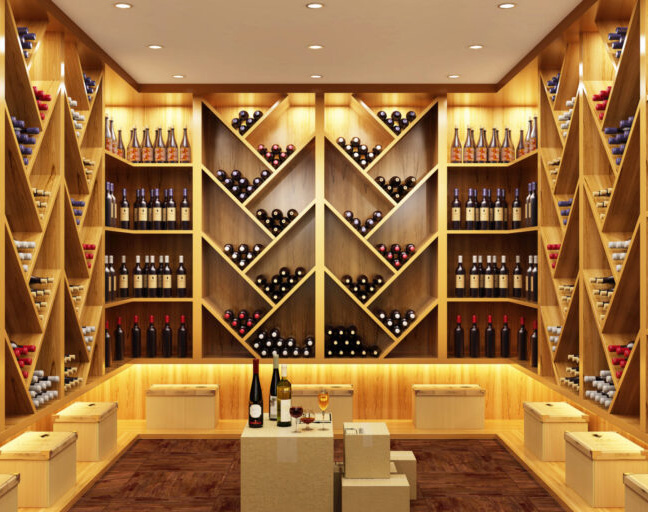
Next Steps
Identify Your Wine Cellar Purpose
- Display vs Storage
- Short Term vs Long Term
- Investment for resale
- Maybe you like collecting things
- Quantity of bottles now and in future
- Types of Wine (Dessert and German bottles have different shapes)
Determine Wine Cellar Size
Choose Your Wine Cellar Location
Wine Cellar Temperature
Humidity Control
Wine Cellar Framing and Insulation
- More insulation is always better but the gains between 6” and 12” wall thickness is minimal.
- 2″X4″ wood studs are typical, but a 2″x6″ wall cavity is better.
- Exposed concrete is risky and should be isolated with a foam panel. If the concrete temperature is warmer than your cellar set temperature, then your cooling equipment will have to cool the concrete as well as the cellar.
- Floors, often overlooked with slab on grade can be framed with furring strips and insulated.
- The vapor barrier must be installed in the joist space to form a complete seal. Closed cell foam insulation does both.
- The entire wine cellar should be insulated to conserve energy, stabilize temperatures and control humidity. Minimum insulation is: — 3½ inches (9 cm) in walls — 6 inches (15 cm) in ceiling — More insulation is better
Determine Your Materials
Choose Your Entry Door
Lighting
Choosing a Cooling System
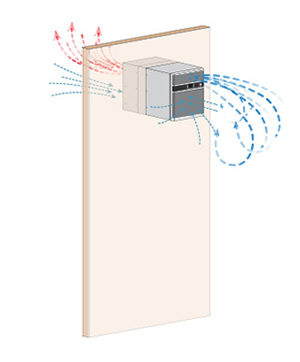
Self-contained cooling system
This system is the most cost effective and the easiest to install . The unit is intended to mount between the studs of a current wall and does not require a license from an installation technician.
Self-contained units house the evaporator and condenser together. One side of the unit will blow cool air into your wine cellar, whilst the other side will absorb the heat from your cellar and exhaust it into an area which is adjacent to your cellar.
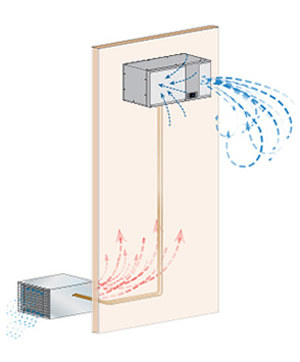
Split cooling system
This type of system will be a quieter and, likely, a more efficient way to cool your cellar .
Split cooling system condensers are typically noisy, though, and will need significant space for ventilation, so the location of your cellar may not include an area for these functions.
If you use a split cooling system, the evaporator and condenser come in two parts. Therefore, the condenser can be placed outside or in a separate room which is more suited for the heat and noise dissipation, such as a basement, roof-top or garage. Then, the quiet evaporator can be installed inside or around the wine cellar.
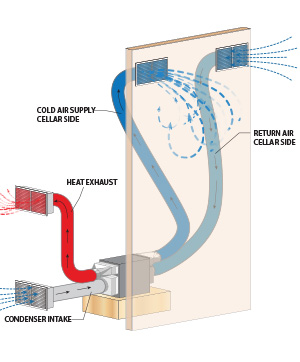
Ducted cooling system
This system can be a self-contained or split cooling system and you usually have more flexibility and insulation options available to you.
The cooling unit can be placed up to 25 (ducted) feet from your wine cellar with the cool air flowing from the cellar and the heat exhaust ducted to the outside of your home. Ducted cooling systems are usually more of an aesthetic choice for wine collectors who would rather not see a cooling unit in their cellar.


